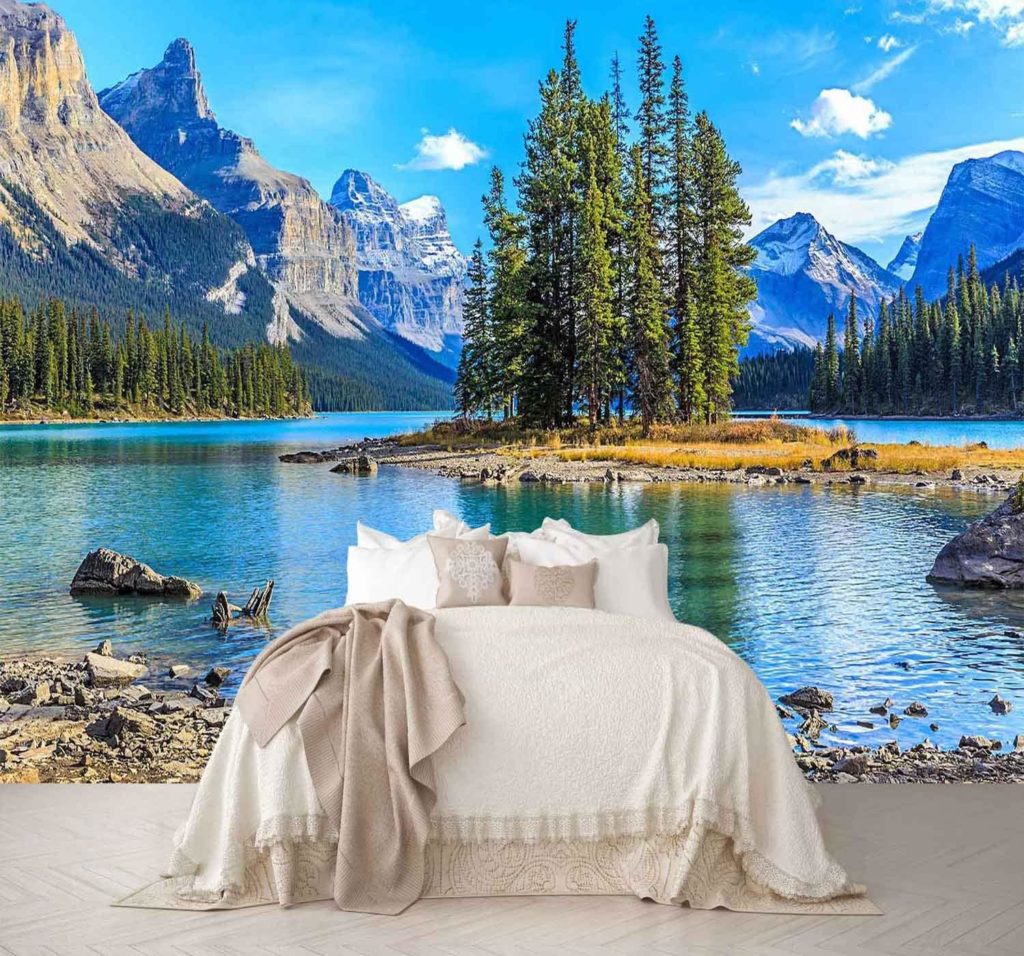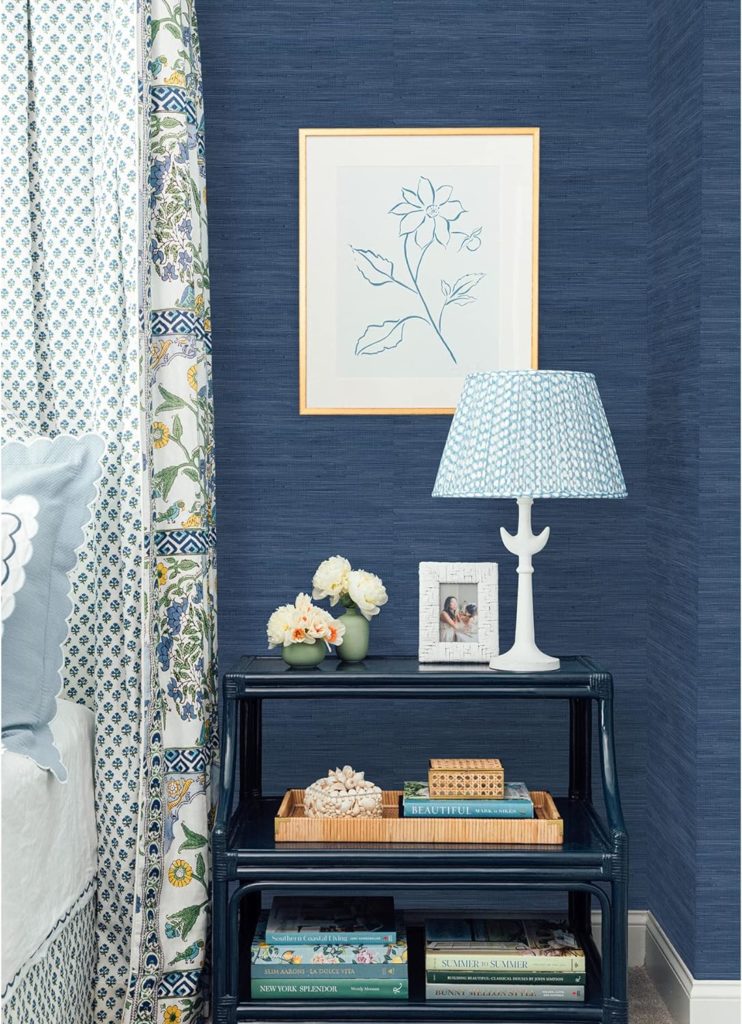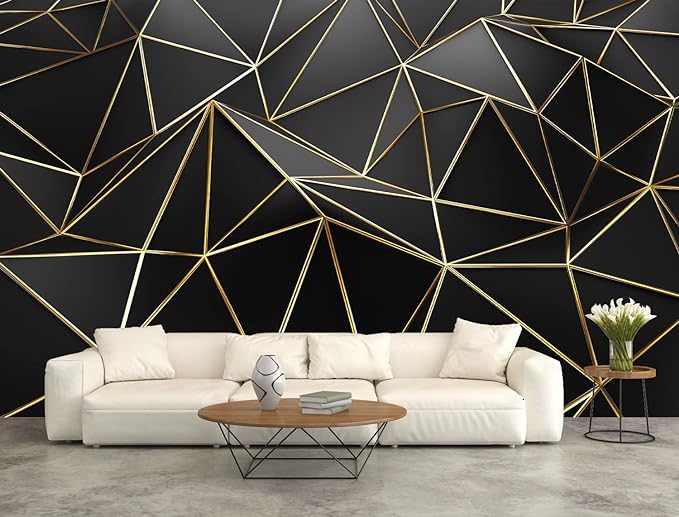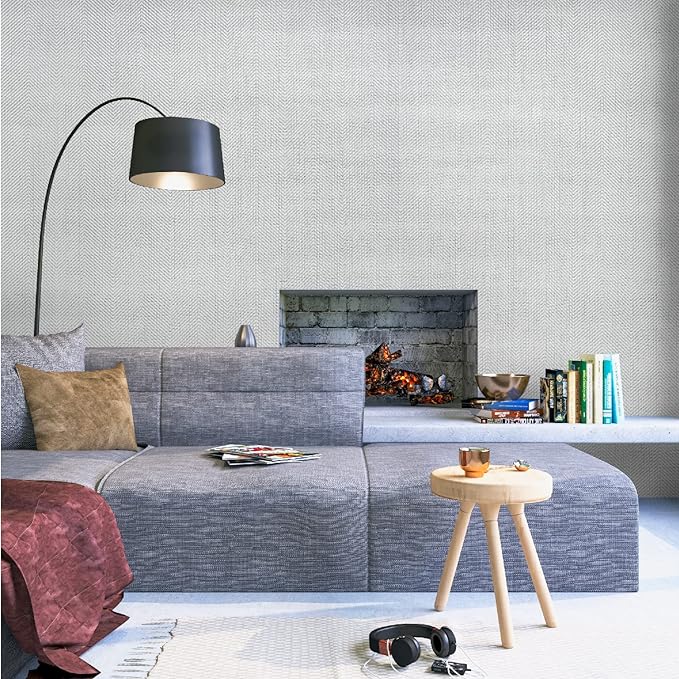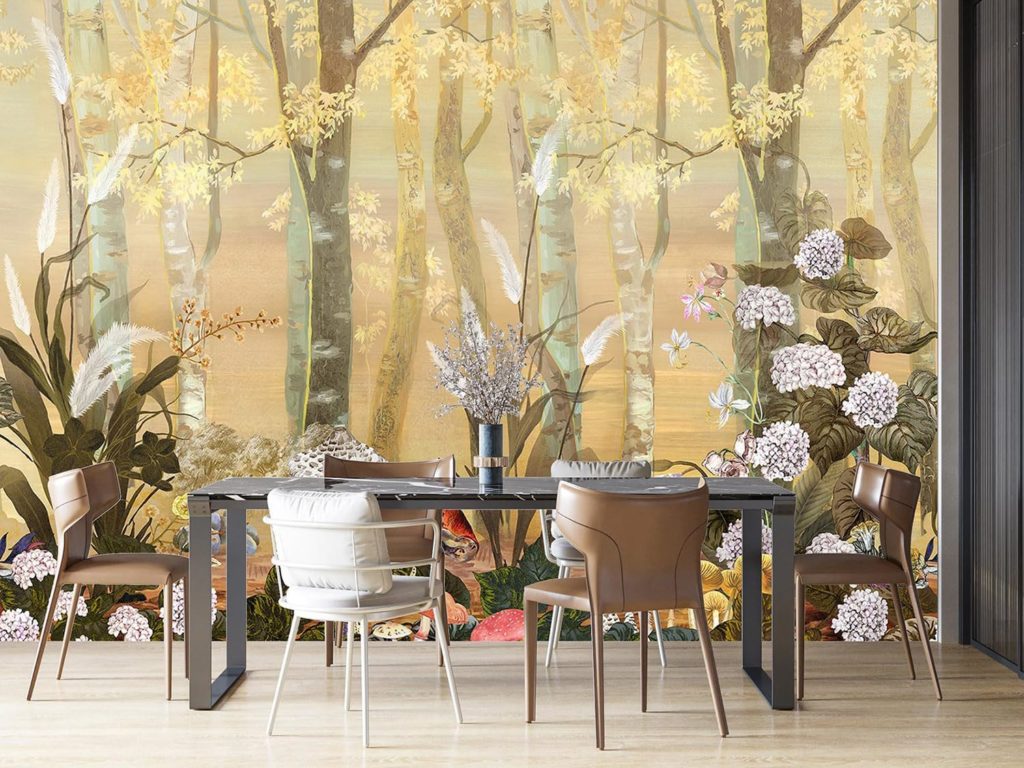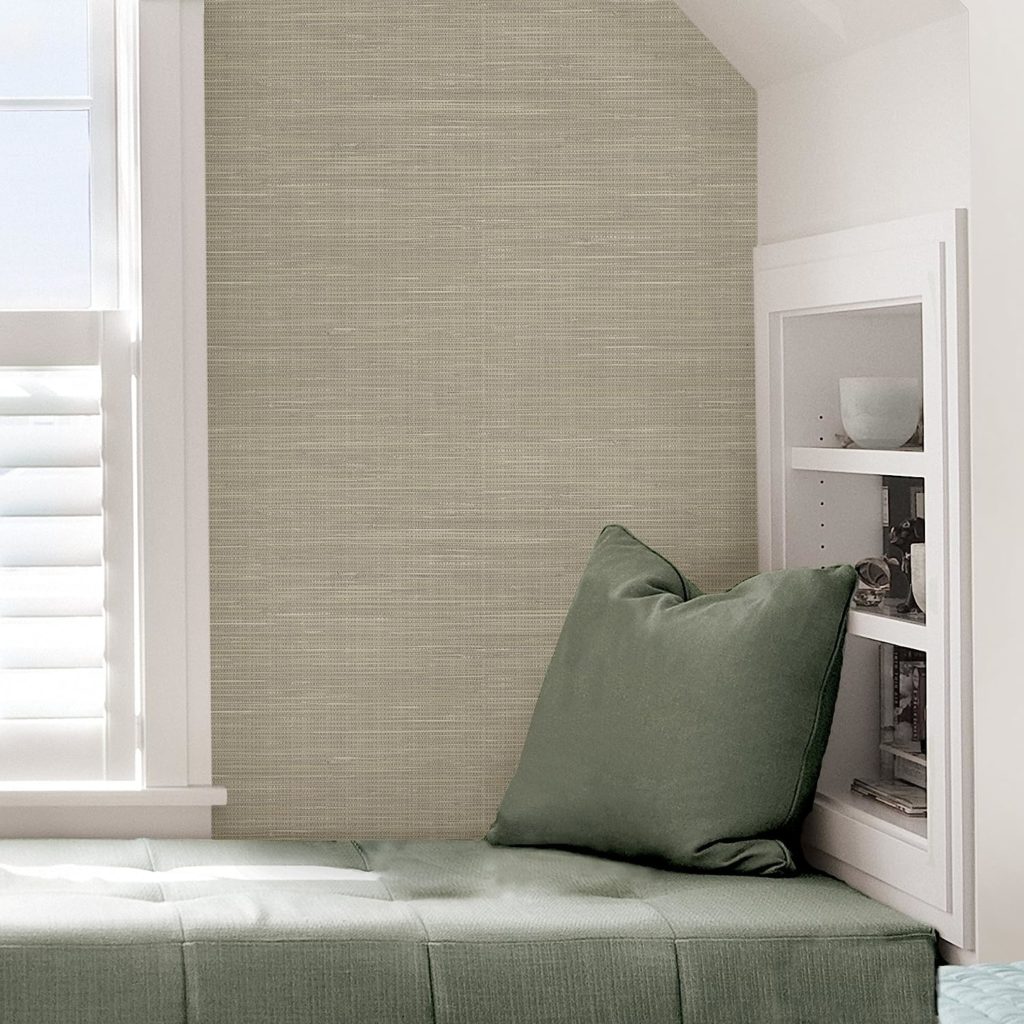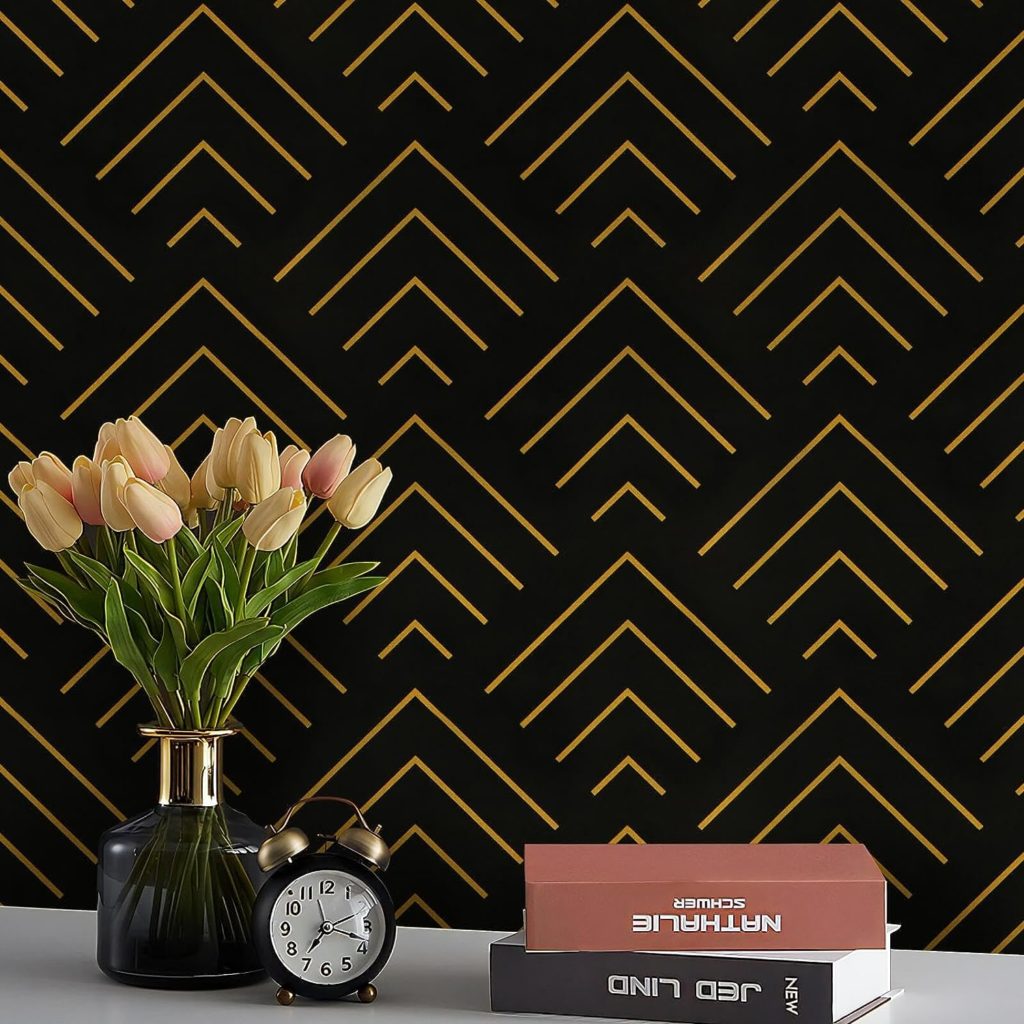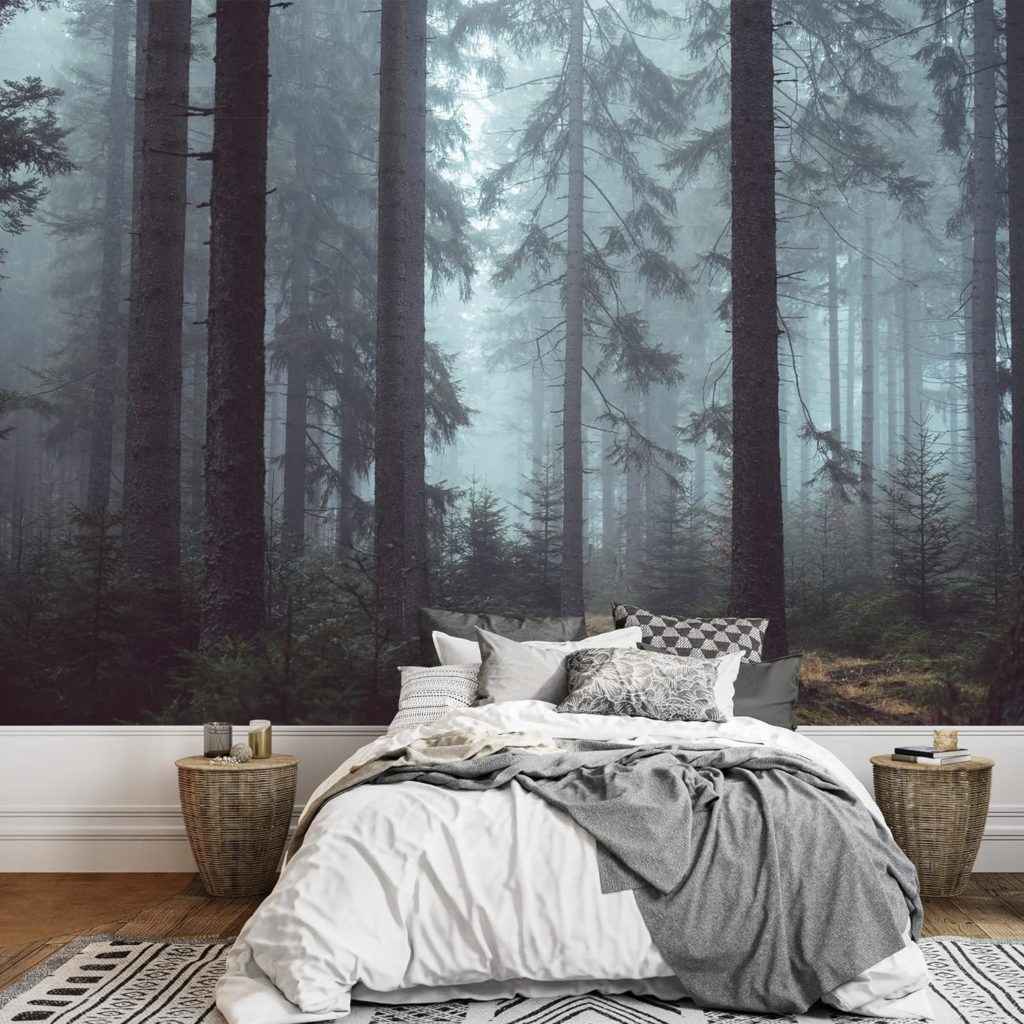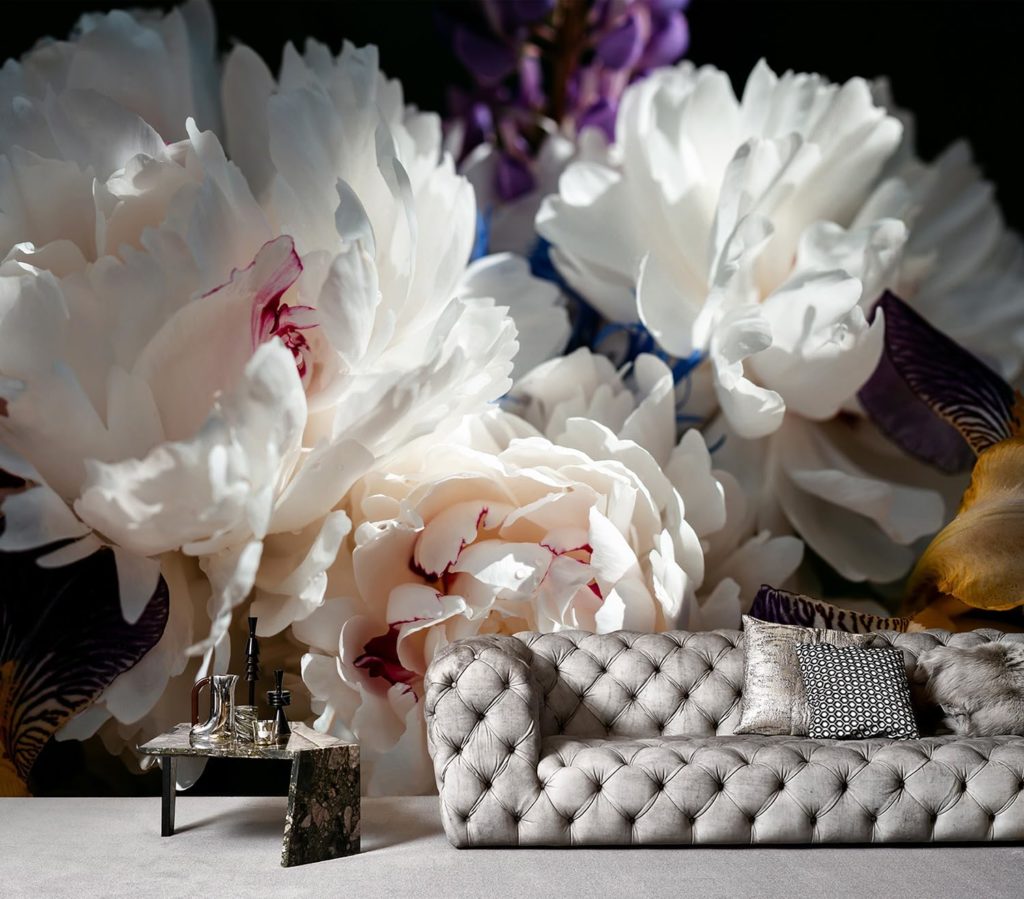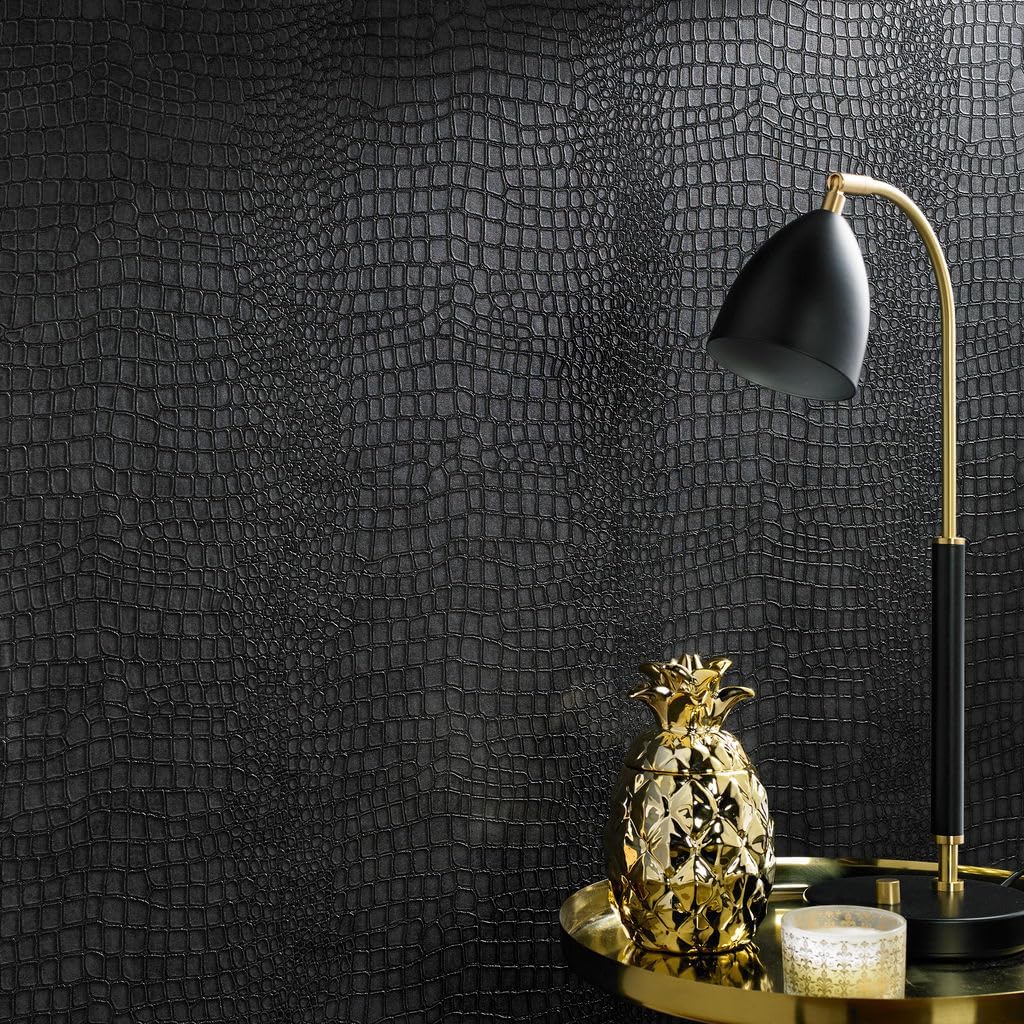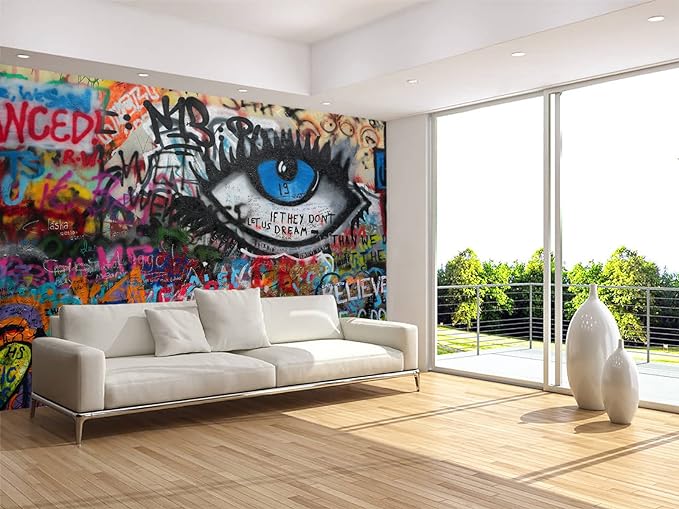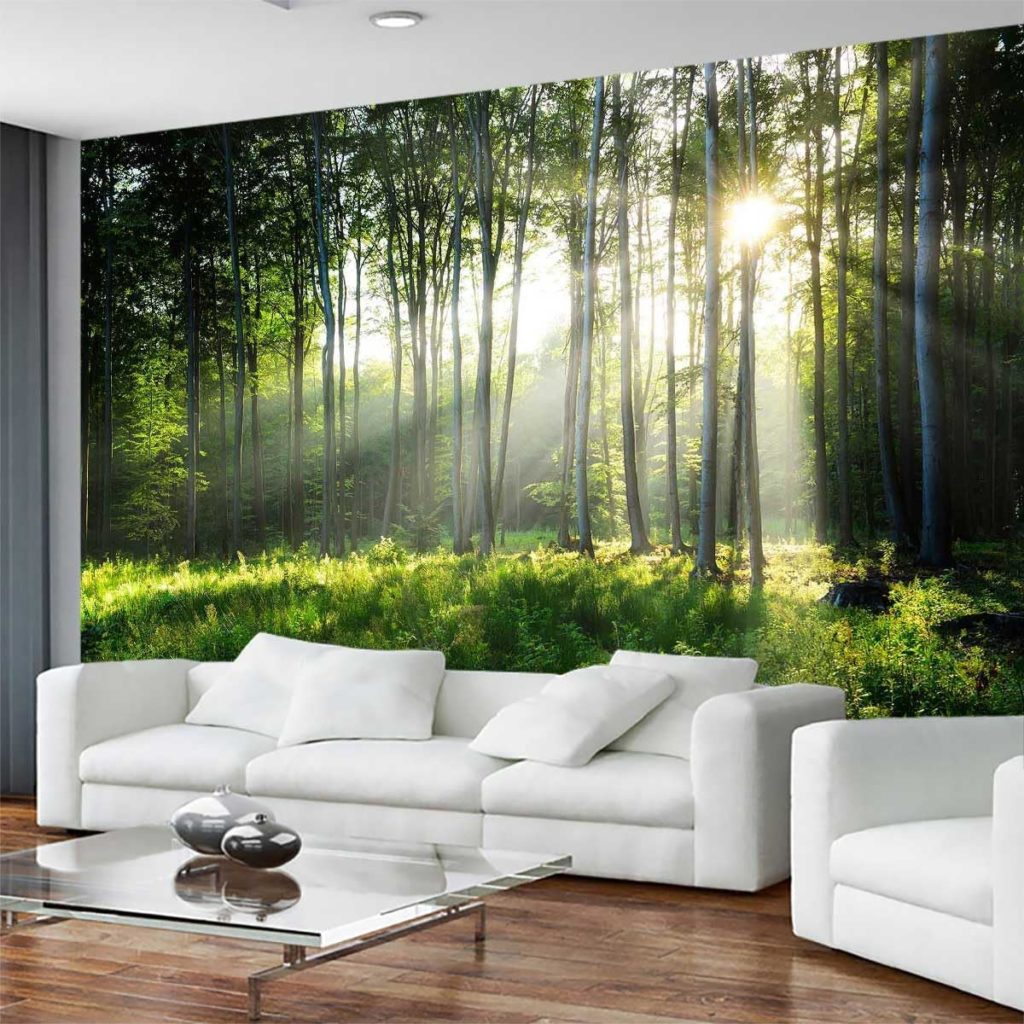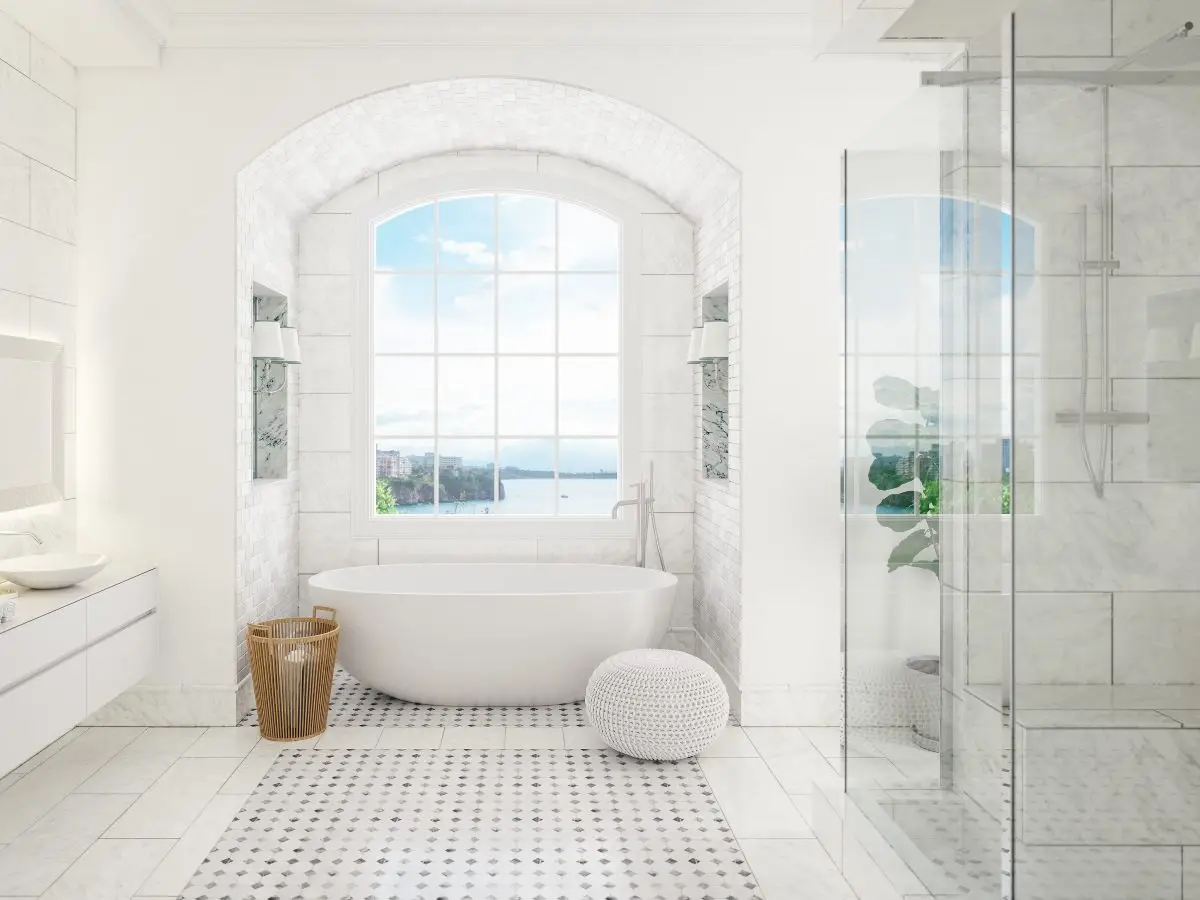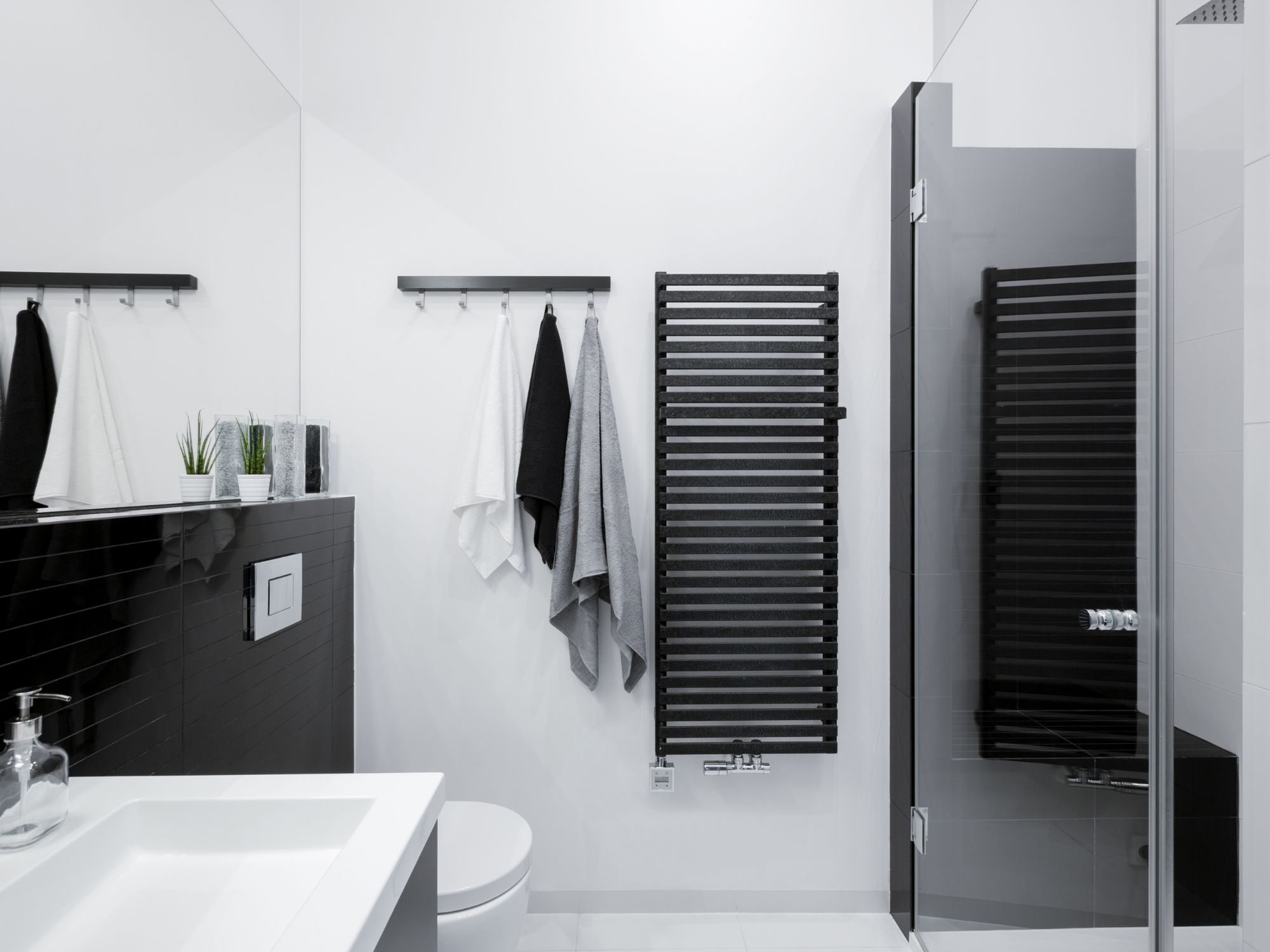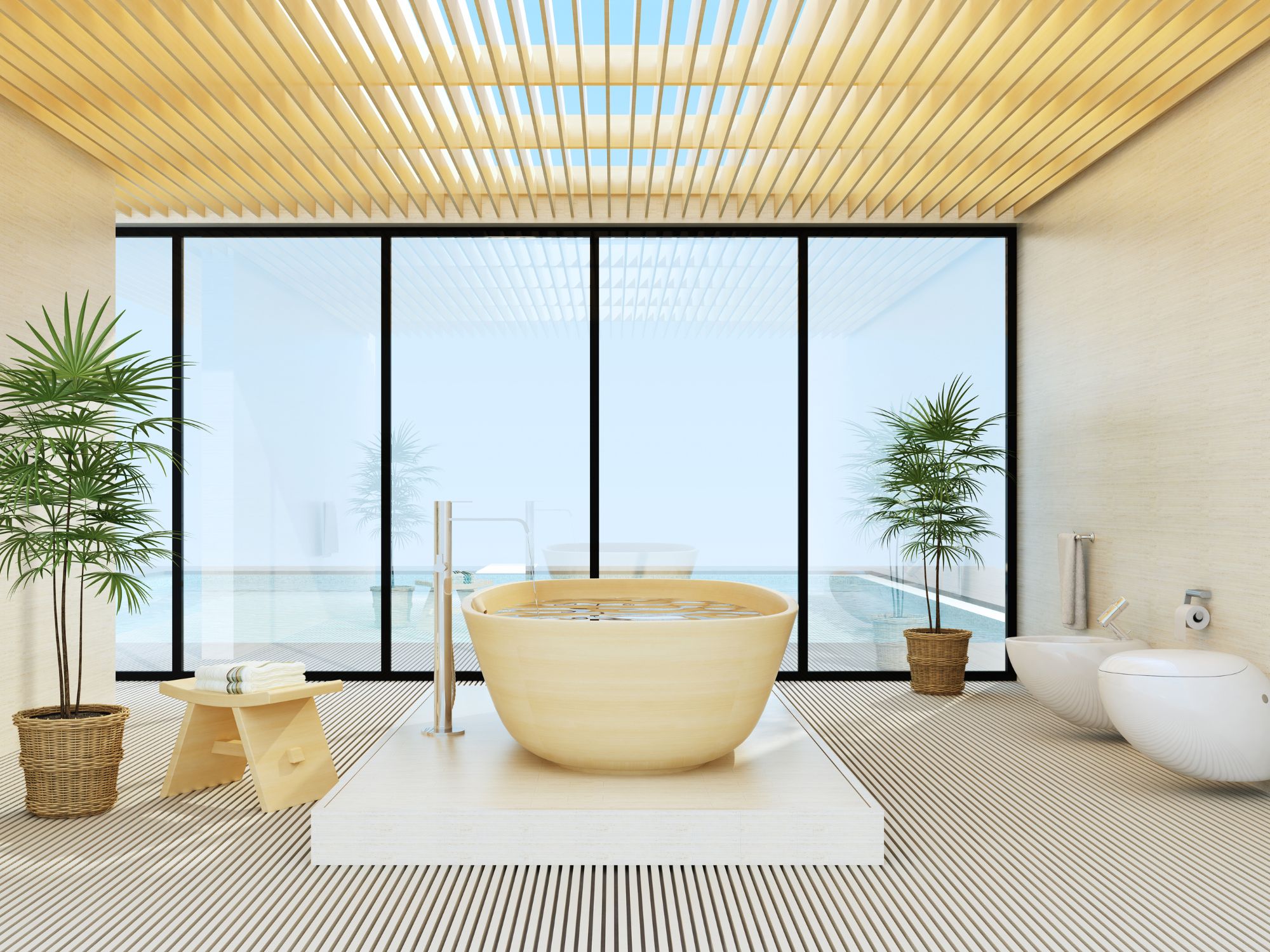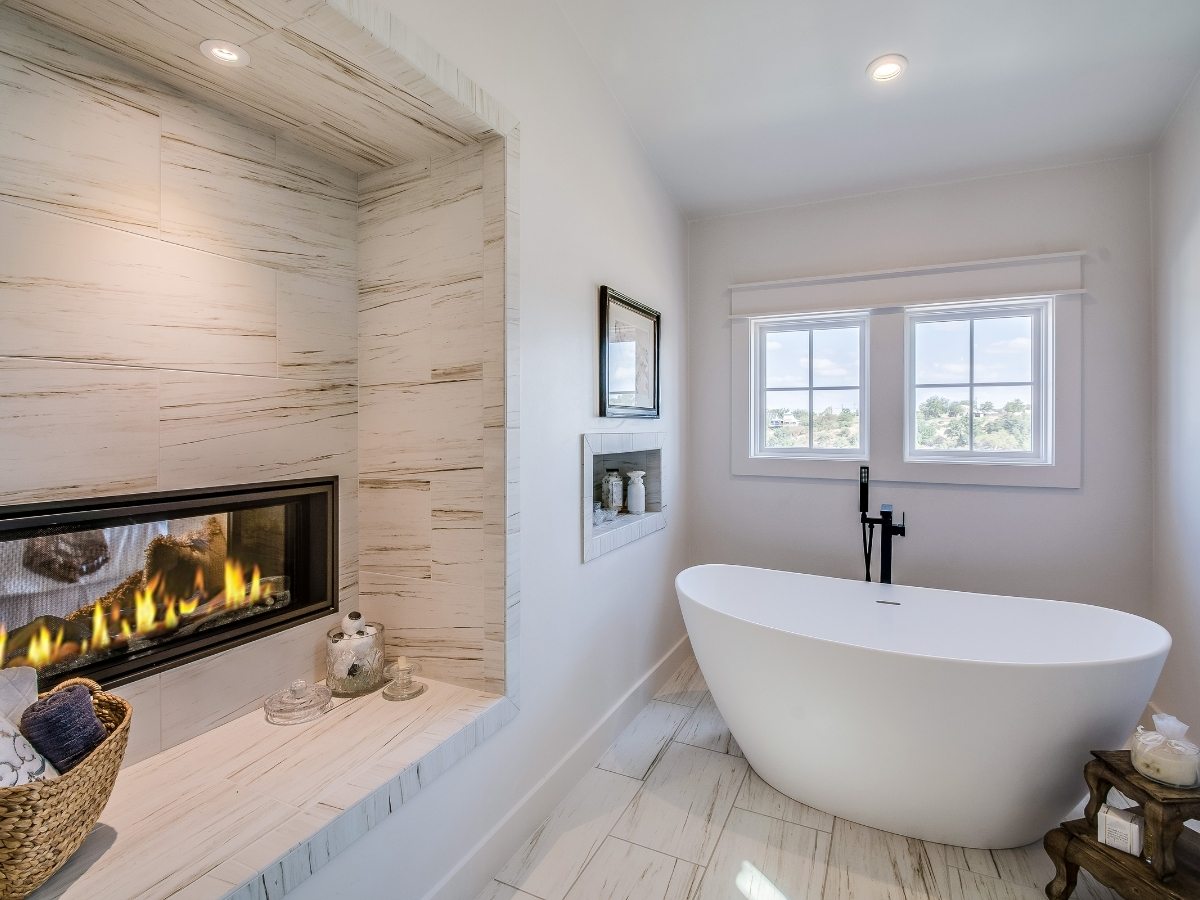This post may contain affiliate links which means I may receive a commission for purchases made through links. I only recommend products that I have personally used or curated specifically after reviewing and ensuring its quality! Learn more on my Private Policy page.
Wallpaper Installation
In the dynamic world of interior design, wallpaper stands as an enduring element of beauty, practicality, and style. As homeowners and design aficionados navigate the myriad of options and intricacies related to wallpaper installation, a plethora of questions often arise.
These queries range from the basic, such as how to choose a design or how much wallpaper is needed for a room, to the more nuanced, like addressing concerns over wallpaper longevity or the nuances of intricate pattern matching.
To assist with these concerns and interest we have curated 72 Frequently Asked Questions (FAQs) with the aim of providing clarity and insight into these common queries. These FAQs have been designed not only to address the most pressing questions but also to offer guidance to those who are new to the world of wallpapers and are considering wallpaper as a decor option.
In a previous blog post we present FAQs 1 to 43. This post presents FAQs 44 to 72.
Whether you’re a seasoned designer looking for specific technical advice or a homeowner diving into wallpapering for the first time, our goal is to equip you with the knowledge you need to make informed decisions.
As you navigate through this article you will find wallpaper designs which we have curated for your decor remodel projects. These are unique and there are options for each decor style. You can Click each Image for more details.
Wallpaper, with its vast array of patterns, textures, and colors, offers transformative potential for any space. Yet, with this potential comes a responsibility to understand and navigate its complexities.
Our FAQs section strives to be that bridge, ensuring that the journey from selection to installation is as seamless as possible. Dive in, explore, and let the world of wallpapering unfold before you.
6. Wallpaper For Wall – Advanced Application
44. wallpaper installation – Wallpapering the Corners: Techniques and tips?
Inside Corners: For inside corners, always split the wallpaper strip. Allow the wallpaper to overlap the corner, then cut it, leaving about an inch to wrap onto the adjacent wall. The next strip will overlap this by a small margin, ensuring a seamless look.
Outside Corners: Outside corners are more forgiving. Wrap the wallpaper around the corner, smoothing out as you go. If the next wall is not plumb, remember to mark a new vertical line before starting the next strip.
- Avoiding Bubbles In Corners: When smoothing wallpaper around corners, be diligent to prevent air bubbles. Use a smoother or wallpaper brush to guide the paper into the corner and onto the adjacent wall.
When wallpapering in corners follow these best practices:
- Overlapping Method: Overlap the wallpaper strips at the corner, making sure the pattern matches and aligns correctly. Smooth out any air bubbles or wrinkles.
- Double-Cut method: Instead of overlapping, you can use the double-cut method for a seamless corner. This involves cutting the wallpaper at a 45-degree angle where it meets the corner, removing the excess, and then overlapping the next strip.
- Use a Seam Roller: After applying the wallpaper, use a seam roller to press down the seams and ensure a smooth and seamless finish.
- Take Your Time: Wallpapering corners requires precision and patience. Take your time to align the pattern and smooth out any imperfections.
Please find below wallpaper designs we have curated for your and have presented through this article for your review and consideration in your next decor remodel project.
Click on any part of the Images for more details or to purchase.
45. wallpaper installation – Layout of Complex Designs in Advance: How-To?
For wallpapers with intricate designs or murals:
- Planning Ahead: Before you start, Lay the wallpaper flat on a clean surface and unroll it carefully. Check for any defects or damage and make sure the pattern is aligned correctly.
- Measure And Cut: Measure the height of the wall and cut the wallpaper strips accordingly, taking into account the pattern repeat. Label each strip to keep track of the order.
- Arrange The Strips: Lay out the cut wallpaper strips on the floor or a large table, arranging them in the desired order and orientation. This will give you a visual representation of how the pattern will look on the walls.
- Center The Design: For focal walls, ensure the main pattern or design element is centered on the wall. Determine how the pattern will flow across the walls. Consider the focal points of the room and how the pattern will be centered or balanced.
- Work In Sections: Handle one section of the design at a time, ensuring alignment and matching before moving on.
Mark & Label: As you plan, lightly mark the back of each wallpaper strip with its order and position to avoid confusion.
- Make Adjustments: If necessary, make adjustments to the layout by rearranging or trimming the strips. Ensure that the pattern aligns correctly and flows seamlessly across the walls.
- Hang The Wallpaper: Once you are satisfied with the layout, begin hanging the wallpaper according to the planned order. Take your time to align the pattern and smooth out any air bubbles or wrinkles.
46. wallpaper installation – Trim Around Windows and Doors: Best Methods?
Approach 1:
When you reach a door or window, hang the wallpaper as if they aren’t there. Allow the paper to overlap them.
- Trimming: Once the wallpaper is smooth and secure, make a diagonal cut from the corner of the window or door frame to the edge of the paper. Trim the excess, ensuring you leave about an inch to tuck and smooth around the frame.
- Edges: Use a smoother or wallpaper brush to push the wallpaper into the edges of the frame, then trim the excess with a sharp knife.
Approach 2:
- Measure and Cut: Measure the width and height of the window or door frame and cut the wallpaper strip accordingly, leaving a few extra inches for trimming.
- Apply the Wallpaper: Apply the wallpaper strip to the wall, making sure it overlaps the window or door frame slightly. Smooth it out with a wallpaper brush or roller.
- Make Relief Cuts: Use a sharp knife or scissors to make relief cuts at the corners of the window or door frame. This will allow the wallpaper to fold neatly around the frame.
- Trim the Excess: Carefully trim the excess wallpaper along the edge of the window or door frame, using a straight edge as a guide. Be precise to achieve a clean and professional finish.
- Smooth and Blend: Use a seam roller to smooth down the wallpaper around the window or door frame, ensuring that it adheres properly. Blend the edges with the surrounding wallpaper for a seamless look.
47. wallpaper installation – Does Wallpaper ruin Drywall?
Please refer to FAQ 25 and 26
Click Image for more details or to purchase.
7. Troubleshooting and Mistakes
48. wallpaper installation – How to remove bubbles or wrinkles from wallpaper?
- Immediate Action: If you notice a bubble during installation, smooth it out immediately using a wallpaper smoother.
- Piercing Technique: For bubbles noticed after installation, use a sharp knife or fine needle to pierce the bubble, then smooth the wallpaper using a seam roller. Gently press the wallpaper down around the slit, working your way out towards the edges.
- Heat: Minor wrinkles can be softened and smoothed out with a hairdryer set on low, but use it cautiously to avoid damaging the wallpaper.
49. wallpaper installation – How to deal with excess Paste on the surface?
- Immediate Cleaning: As soon as you notice excess paste, use a damp sponge or cloth to gently wipe it off.
- Regular Check: Periodically inspect your work for paste smears as you install subsequent strips. Change the water in the sponge or cloth as needed to keep it clean.
- Avoid Over-Saturation: Don’t overly wet the wallpaper, as this might damage it.
50. wallpaper installation – How to Rectify Mismatched Patterns?
If the wallpaper pattern does not match up correctly, there are a few options to rectify the issue:
- Reposition: If noticed immediately, gently peel back the wallpaper and realign.
- Replacement: If the mismatch is significant and dried, it’s best to replace that particular strip with a new one, ensuring pattern alignment.
- Remove the wallpaper and start over: This is the most time-consuming and costly option, but it ensures a seamless and cohesive look.
- Cover the mismatched area with a border or trim: This is a quick and easy fix that can add visual interest to the room.
- Embrace the mismatched pattern: If the mismatch is minor, it may not be noticeable or may even add character to the room.
Click Image for more details or to purchase.
51. wallpaper installation – Why would Wallpaper fall off the Wall?
Wallpaper can fall off the wall for several reasons, including:
- Poor surface preparation: If the wall was not properly cleaned, primed, or repaired before wallpapering, the wallpaper may not adhere properly.
- Incorrect paste or adhesive: Using the wrong type of paste or adhesive can cause the wallpaper to fall off the wall.
- Humidity or moisture: High humidity or moisture can cause the wallpaper to become loose or peel off the wall.
- Age or wear and tear: Over time, wallpaper can become worn or damaged, causing it to fall off the wall.
- Improper installation: If the wallpaper was not hung correctly, it may not adhere properly and could fall off the wall.
Click Image for more details or to purchase.
8. Maintenance and Care
52. wallpaper installation – How do you Clean Wallpaper?
Cleaning wallpaper is a delicate process that requires gentle handling to avoid damaging the wallpaper. Here are some steps to follow:
- Dust the wallpaper: Use a soft-bristled brush or a vacuum cleaner with a soft brush attachment to remove any dust or debris from the wallpaper.
- Spot clean stains: Use a damp sponge or cloth to gently spot clean any stains or marks on the wallpaper. Avoid using too much water, as this can cause the wallpaper to become discolored or damaged.
- Use wallpaper cleaner: If the wallpaper is heavily soiled, use a wallpaper cleaner specifically designed for the type of wallpaper you have. Follow the manufacturer’s instructions carefully.
- Dry the wallpaper: After cleaning, use a dry cloth or towel to gently pat the wallpaper dry. Avoid rubbing or scrubbing, as this can damage the wallpaper.
- Avoid Harsh Chemicals: Do not use abrasive or strong chemical cleaners as they can damage the wallpaper.
Click Image for more details or to purchase.
53. wallpaper installation – Can you Paint Over Wallpaper?
Yes, you can paint over wallpaper, but it is important to properly prepare the wallpaper before painting to ensure a smooth and even finish. Here are some steps to follow:
- Adherence to the Wall: Always ensure the wallpaper is securely adhered to the wall.
- Clean the Wallpaper: Wipe the wallpaper with a damp cloth to remove any dust or debris.
- Repair any Damages: Use spackle or joint compound to fill in any holes or cracks in the wallpaper. Sand the surface smooth once the compound is dry.
- Prime the Wallpaper: Apply a coat of an oil-based primer to the wallpaper to help the paint adhere better and prevent any stains or discoloration from bleeding through.
- Paint the Wallpaper: Once the primer is dry, paint the wallpaper with a high-quality paint designed for use on wallpaper. Use a roller or brush to apply the paint evenly.
To read our Blog Post on How To Remove Wallpaper please Click Image below.
54. wallpaper installation – How often should wallpaper be replaced or updated?
The lifespan of wallpaper can vary depending on the quality of the wallpaper, the installation process, and the conditions of the room. Generally, a good quality wallpaper can last up to 15 years or more.
However, if the wallpaper becomes damaged or outdated, it may need to be replaced or updated sooner. The longevity of wallpaper varies based on the room’s conditions and the quality of the wallpaper. Generally:
- Durability: High-quality wallpapers can last up to 15 years or even longer.
- Trends & Aesthetics: Style-wise, you might want to update every 5-7 years to keep up with interior design trends.
- Environmental Factors: In areas with high humidity or wear-and-tear, wallpaper might require replacement sooner.
55. wallpaper installation – What is the lifespan of wallpaper?
Refer to FAQ 54
Click Image for more details or to purchase.
Reyhui Wall Mural Abstract Green Geometric Pattern Wallpaper
Reyhui Wall Mural Abstract Green Geometric Pattern Wallpaper Seamless Wall Sticker for Bedroom Living Room Dinning Room Motif Shop Office(not self-Adhesive)
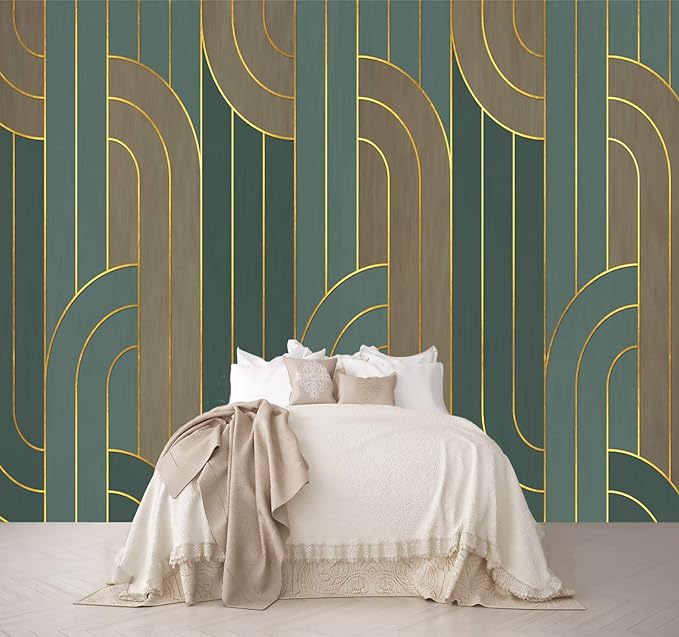
56. wallpaper installation – How long will wallpaper last?
Refer to FAQ 53 and FAQ 54
Click Image for more details or to purchase.
57. wallpaper installation – Is Wallpaper High Maintenance?
Wallpaper can be high maintenance compared to painted walls. It requires gentle handling and cannot be scrubbed or washed like painted walls.
However, with proper care and maintenance, wallpaper can last for many years
Click Image for more details or to purchase.
58. wallpaper installation – How much does Wallpaper Cost?
The cost of wallpaper can vary depending on the type, quality, and design of the wallpaper. Vinyl wallpaper is typically more durable than paper or canvas ones but may require special care during installation.
Grass-cloth wallpaper is a natural option that adds texture and warmth to a room. The cost of wallpaper will range based on the style and type of wallpaper.
59. wallpaper installation – Is it cheaper to Paint or Wallpaper a Room?
Painting a room is generally cheaper than wallpapering a room. However, wallpaper can add texture, depth, and visual interest to a room that paint cannot.
The cost of wallpaper can range from a few dollars per roll to hundreds of dollars per roll, while the cost of paint can range from a few dollars per gallon to hundreds of dollars per gallon.
To assist you in understanding the benefits of wallpapering please read 11 Reasons Why Wallpaper Is great For Your Home and our blog post – How To Choose The Right Wallpaper for an understanding of how to choose wallpaper for each room of your home.
Click Image for more details or to purchase.
60. wallpaper installation – How much should you spend on wallpaper?
The amount you should spend on wallpaper depends on your budget and the quality and design of the wallpaper you choose. It is important to choose a high-quality wallpaper that will last for many years and complement the overall aesthetic of your space.
Click Image for more details or to purchase.
61. wallpaper installation – What is the Average Cost to Wallpaper a Room?
The cost to wallpaper a room can vary depending on the size of the room, the type and quality of the wallpaper, and the installation process.
The cost of wallpaper can range from a few dollars per roll to hundreds of dollars per roll, and the cost of installation can range from a few hundred dollars to several thousand dollars assuming you’re not doing a DIY project.
Click Image for more details or to purchase.
62. wallpaper installation – Is a house warmer with wallpaper?
Wallpaper can provide some insulation to a room, but it is not a substitute for proper insulation. The amount of insulation provided by wallpaper depends on the type and thickness of the wallpaper, as well as the condition of the walls.
Proper insulation, such as adding insulation to the walls or attic, is the most effective way to keep a house warm.
63. Does wallpaper insulate your home?
See FAQ 62 Above
Click Image for more details or to purchase.
9. Concerns and Considerations
64. Is wallpaper good or bad for walls?
Wallpaper can be both good and bad for walls, depending on the preparation and type of wallpaper used. High-quality wallpapers that are properly installed can protect walls and enhance their appearance.
However, poorly installed or low-quality wallpapers can damage walls upon removal or trap moisture leading to mold, mildew, and other issues. Wallpaper is generally considered good for walls if it is properly installed but can be difficult to remove causing damage to the walls.
Read our Blog Post Mistakes To Avoid When Installing Wallpaper for details on installing wallpaper.
65. What wallpaper does not ruin walls?
Removable wallpapers, often referred to as ‘peel and stick’, are designed to be easily removed without leaving residue or damaging the walls. They’re especially suitable for rented spaces or areas where frequent changes might be desired.
Vinyl wallpaper is typically more durable than paper or canvas ones but may require special care during installation or removal. Grass-cloth wallpaper is a natural option that adds texture and warmth to a room.
It is important to choose a high-quality wallpaper that will last for many years and complement the overall aesthetic of your space.
66. Should I wallpaper all walls or just one?
Refer to FAQ35
Click Image for more details or to purchase.
67. Does Wallpaper Attract Mold?
Wallpaper itself doesn’t attract mold, but if it’s installed on walls with existing moisture problems or in rooms with high humidity without proper ventilation (like bathrooms), it can trap moisture and become a breeding ground for mold.
Wallpaper itself does not attract mold, but if it is not properly installed or maintained, it can become damp and provide a breeding ground for mold and mildew.
It is important to properly prepare the walls before hanging wallpaper and to follow the manufacturer’s instructions for cleaning and maintenance to minimize the risk of mold grow
Click Image for more details or to purchase.
68. Is Wallpaper worth the Cost?
The value of wallpaper lies in its aesthetic appeal, durability, and the ambiance it adds to a room. If you’re seeking a unique design, texture, or want a long-lasting wall treatment, the initial investment in wallpaper can be well worth it.
Whether wallpaper is worth the cost depends on personal preference and the overall aesthetic of the room. Wallpaper can add texture, depth, and visual interest to a room that paint cannot.
The cost of wallpaper can range from a few dollars per roll to hundreds of dollars per roll, while the cost of paint can range from a few dollars per gallon to hundreds of dollars per gallon.
69. Why would someone choose Wallpaper instead of Paint?
Wallpaper offers design possibilities that paint doesn’t – intricate patterns, textures, and finishes. It also provides an added layer of protection for walls and can sometimes be easier to clean, depending on the type.
- Wallpaper instead of paint:
- Wallpaper can add texture, depth, and visual interest to a room that paint cannot.
- Wallpaper can cover up defects or imperfections in the walls.
- Wallpaper can last for many years with proper care and maintenance.
- Wallpaper comes in a wide variety of colors, patterns, and textures that can be customized to fit the overall aesthetic of the room
To read our Blog Post on 11 Reasons Wallpaper is Great For Your Home. Click Image

70. What is the black stuff behind Wallpaper?
The “black stuff” can often be mold or mildew, resulting from trapped moisture behind the wallpaper. The black stuff behind wallpaper is likely mold or mildew. This can occur if the wallpaper was not properly installed or maintained, allowing moisture to seep through and provide a breeding ground for mold and mildew.
It is important to properly prepare the walls before hanging wallpaper and to follow the manufacturer’s instructions for cleaning and maintenance to minimize the risk of mold growth.
Click Image for more details or to purchase.
71. Can you Wallpaper over Black Mold?
No, you should never wallpaper over mold. Mold is a health hazard and can damage the structural integrity of your home. It’s essential to first address the root cause of the mold, clean and remove it, then ensure the wall is dry before proceeding with wallpaper or any other wall treatment.
It is not recommended to wallpaper over black mold. The mold should be properly removed and the walls should be treated and repaired before hanging new wallpaper. Wallpapering over mold can cause the mold to spread and can lead to health issues.
Click Image for more details or to purchase.
72. What can I put on my walls to prevent Mold?
To prevent mold growth on walls, it is important to properly prepare the walls before hanging wallpaper and to follow the manufacturer’s instructions for cleaning and maintenance. Additionally, using a mold-resistant primer or paint can help prevent mold growth. Proper ventilation and humidity control can also help prevent mold growth
- Ventilation: Ensure rooms, especially bathrooms and basements, are well-ventilated.
- Use Mold-Resistant Products: Mold-resistant primers and paints can help.
- Dehumidifiers: Using a dehumidifier can help reduce moisture in areas prone to dampness.
- Regular Inspection: Check for leaks, and address any moisture issues immediately.
- Mold-Resistant Wallpapers: If opting for wallpaper, choose varieties designed to resist mold.
Conclusion
Remember, as with any DIY project, not rushing the process is important. The guide provided above offers a general overview. However, depending on the type of wallpaper, the specific instructions might vary slightly. Always follow the manufacturer’s instructions when available.
Featured Related Blog Article



